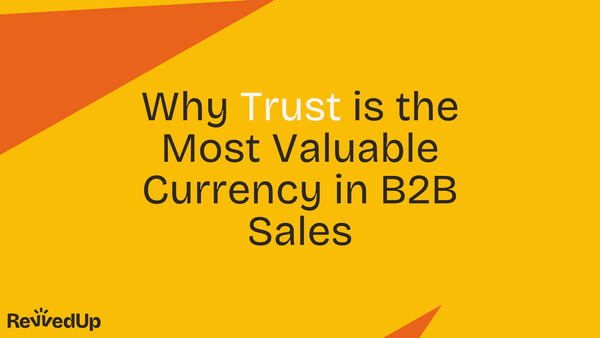5 Great Use Cases for ABM (and How to Do Them Right)

Account-Based Marketing (ABM) has moved well beyond buzzword status - and its application and benefits are being seen beyond purely net new logo wins.
Done right, it becomes the engine room for strategic growth: helping teams win new business, accelerate sales velocity, and build deeper relationships with customers and partners alike.
Whether you're just starting out or looking to sharpen your focus, here are five use cases where ABM consistently delivers results — and how to make each one count.
1. Winning Net New Logos
ABM's natural centre of gravity is landing high-value new customers.
Rather than chasing volume, ABM aligns your go-to-market teams around quality — targeting accounts that fit your ideal customer profile and show signs of active buying intent.
Tips to execute:
- Build an Ideal Customer Profile (ICP) by analysing your top-performing customers: revenue, retention, buying cycle.
- Layer in third-party intent data and firmographics to prioritise high-fit, high-propensity accounts.
- Develop segmented messaging by vertical, pain point, or role.
- Use tech to orchestrate coordinated plays across outbound email, paid social, direct mail, and sales outreach.
Real-World Inspiration: At Hexagon, ABM and demand gen teams aligned to shift from product-led to customer-first messaging. They focused on less volume and more relevance, warming target accounts with strategic brand plays before surfacing high-intent ones through data-driven engagement signals.
Tactical example: Launch a "Top 100 Accounts" campaign, combining LinkedIn ads, CEO-signed intro letters, and outbound plays tied to industry trends (e.g., regulation shifts, layoffs, funding rounds).
2. Accelerating Deal Cycles
Enterprise sales are slow for a reason: multiple stakeholders, high scrutiny, long procurement.
ABM helps sales teams navigate the politics and complexity of big-ticket deals by arming them with relevance and insight at every touchpoint.
Tips to execute:
- Build an internal deal map: who influences, who decides, who blocks.
- Create tailored nurture sequences per persona. For example, send risk mitigation material to legal, while offering a business case to the CFO.
- Deploy conversational ABM: real-time chat, executive videos, and live deal portals that update as conversations progress.
- Use custom retargeting to keep messaging visible between meetings.
Real-World Inspiration: Hexagon built full-funnel account strategies to support long, complex deal cycles — aligning marketing with ADRs beyond top-of-funnel and focusing on buyer committees, not individuals. They anchored messaging in the customer’s asset lifecycle, making it easier for sales to engage the right stakeholders at the right time.
Tactical example: As soon as a deal enters late-stage, spin up a private landing page with use-case calculators, stakeholder guides, and a message from your CEO addressing the account directly.
3. Driving Customer Expansion
Expanding within existing accounts is often faster and more efficient than chasing new ones — especially when budgets are tight. ABM lets you treat top customers like prospects all over again.
Tips to execute:
- Run usage and product-fit analysis to spot expansion opportunities.
- Score customers based on account maturity, business growth, and relationship depth.
- Launch quarterly value reviews tied to roadmap-based upsell offers.
- Target different business units with relevant success stories from within the same company.
Real-World Inspiration: At KPMG US, over 50 marketers are dedicated to ABM — and their primary use case is client expansion. By integrating sector-based thought leadership with account-level insights, they craft personalized growth plans, identify whitespace, and map new relationships inside existing client orgs
Tactical example: Build an expansion ABM dashboard in your CRM: accounts with >70% product adoption, fast support resolution times, and new hires in adjacent departments get flagged for marketing-sourced cross-sell campaigns.
4. Targeted Brand Building
Most brand plays are too broad. ABM fixes that by ensuring your awareness budget is only spent on companies that matter.
Tips to execute:
- Create a segmented brand tier list: Tier 1 (strategic), Tier 2 (emerging), Tier 3 (watchlist).
- Use programmatic and social display ads to serve tailored thought leadership.
- Run “brand warm-up” plays for markets you plan to sell into 6–12 months from now.
- Turn customer success into marketing assets. Your best brand builder is a peer story.
Real-World Inspiration: Hexagon launched a “Make Data Make Sense” brand campaign as a strategic narrative layer, tying together ABM and demand gen efforts with cohesive messaging that spoke directly to asset lifecycle buyers
Tactical example: Launch a "category challenger" campaign featuring bold POV content, earned media coverage, and exclusive events aimed solely at your top 100 accounts by region or vertical.
5. Building Key Partnerships
Your next big growth channel may come from the right alliance, not another deal. ABM tactics can help unlock strategic partnerships and tech integrations by applying the same principles you use on buyers.
Tips to execute:
- Prioritise potential partners with aligned ICPs and GTM overlap.
- Map out their org: who leads partnerships, who runs GTM, who influences roadmap.
- Send an ABM-style “partnership pitch” with shared customer use cases and market sizing.
- Run co-branded tests (e.g. webinars, bundles, referral programs) to validate interest before formalising.
Real-World Inspiration: KPMG applies the same ABM playbook to internal alignment across partnership stakeholders. They treat partners as strategic growth drivers — with marketing acting as connective tissue between sector experts, sales, and the wider GTM team.
Tactical example: For a priority partner, build a mini-campaign: personalised video from your founder, a co-sell playbook, and a data sheet showing estimated joint revenue potential.
Final Thoughts
ABM is no longer just about landing whale accounts. It’s a full-funnel strategy for focused growth across your whole GTM.
Whether you’re targeting prospects, accelerating deals, or expanding revenue, ABM gives you the structure to act with focus and intent.
Start narrow. Pick one use case. Align your team. Then scale what works. The results compound fast when the execution is right.




